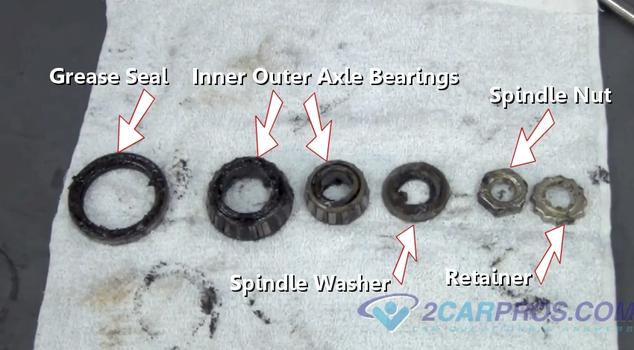Grinding Noise
Car Makes Grinding Noise
Helpful Information
Most grinding noises will be generated while driving, if estimating the location of the grinding sound is difficult, have a helper ride along in a rear seat to give a new perspective on the origin of the grinding noise. Once a grinding sound has been detected, action must be prompt to stem further damage.
Step by step guide on how to repair automotive grinding noises, this information pertains to most vehicles.
Difficulty Scale: 4 of 10
Step 1 - Grinding brakes are the number one cause for grinding noises, when a brake pad wears down it contacts the rotor creating a grinding noise. If a grinding noise is heard when the brakes are depressed, check the front and rear brake pads.

Grinding Brakes
Step 2 - An axle bearing is designed to support the weight of the vehicle, while allowing the wheels to rotate. These bearings are manufactured with high grade steel that resists wear under extreme conditions. When an axle bearing fails it allows metal to contact metal under pressure which creates a grinding noise. Once an axle bearing fails it cannot be repaired, replacement is required.

Axle Bearing Set
Step 3 - Standard transmissions offer an alternative to automatically shifted transmissions. When a clutch malfunctions, it will not allow the engine to become disengaged from the transmission, which causes a grinding noise when gear engagement is attempted.

Clutch Assembly Cutaway
Step 4 - If a grinding noise is present when the engine is cranked over, chances are the battery voltage is low, flywheel is damaged or the starter motor is not properly aligned.

Cranking Engine Over

Grinding Brakes

Axle Bearing Set
Step 3 - Standard transmissions offer an alternative to automatically shifted transmissions. When a clutch malfunctions, it will not allow the engine to become disengaged from the transmission, which causes a grinding noise when gear engagement is attempted.

Clutch Assembly Cutaway

Cranking Engine Over
Comments
Post a Comment